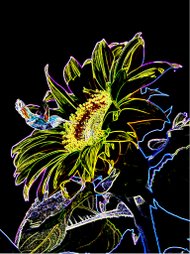
Jump Start the Growing Season – Just as greenhouse gardeners are able to extend the growing season they can get a head start as well. Many desirable plant varieties cannot be sowed until after the last freeze of the season and in some cases it takes even longer for the ground to warm to an appropriate temperature for optimum seed germination. In the greenhouse, seed germination can start three to four weeks before the estimated last freeze of the season giving greenhouse gardeners a head start on their open air counterparts. This is particularly important for success with long season vegetables (those that require 70 or more days to produce) e.g., melons, tomatoes, eggplants, peppers, corn, carrots and parsnips among others.
Climate Control – Most seeds germinate when the soil temperature is between 68 and 86°F. In some areas the greenhouse may be warm enough for good seed germination on its own, but if not, the sheltered environment of the greenhouse is a perfect place to use inexpensive soil heating cables or electric seed warming trays for starting seeds. An added advantage of the greenhouse for your new seedlings is protection from severe weather like strong wind, rain or unexpected cold that can be devastating to new sprouts. The increased humidity of the greenhouse also helps to provide an ideal germinating environment.
Pest Control – Seeds and young plants are particularly vulnerable to garden pests and predators. Birds in particular love seeds and often times they will dig them up from the ground before your plants even get a chance to sprout. This even happens when using sprouting trays or containers outside. Once seeds are sprouted, young plants are still quite vulnerable to small rodents and insects until they are 8-10 inches tall. The greenhouse gives plants protection from pests until they are strong enough to have a good chance of survival in the open air garden. An added benefit of the greenhouse is that it provides a wonderful environment for using biological pest control by releasing lady bugs into the greenhouse. Lady bugs will consume up to 1,000 aphids in their lifetimes in both their larvae and adult stages and work well in greenhouse settings.
Now is the Time! - If you have a greenhouse and have not considered starting your plants from seeds you now have all the information and reasons you need to start using this low cost alternative to starting your gardens. Good luck and happy propagation!
Dr. Christopher J. Kline is a master gardener and sunflower specialist living in Paradise Valley Arizona. He is also an editor for http://www.sunflowerocity.com/ The Ultimate Sunflower Site has everything imaginable about sunflowers including great information, links to the best products, sites and discussion boards. You can reach Chris at Chris.Kline@sunflowerOcity.com.


